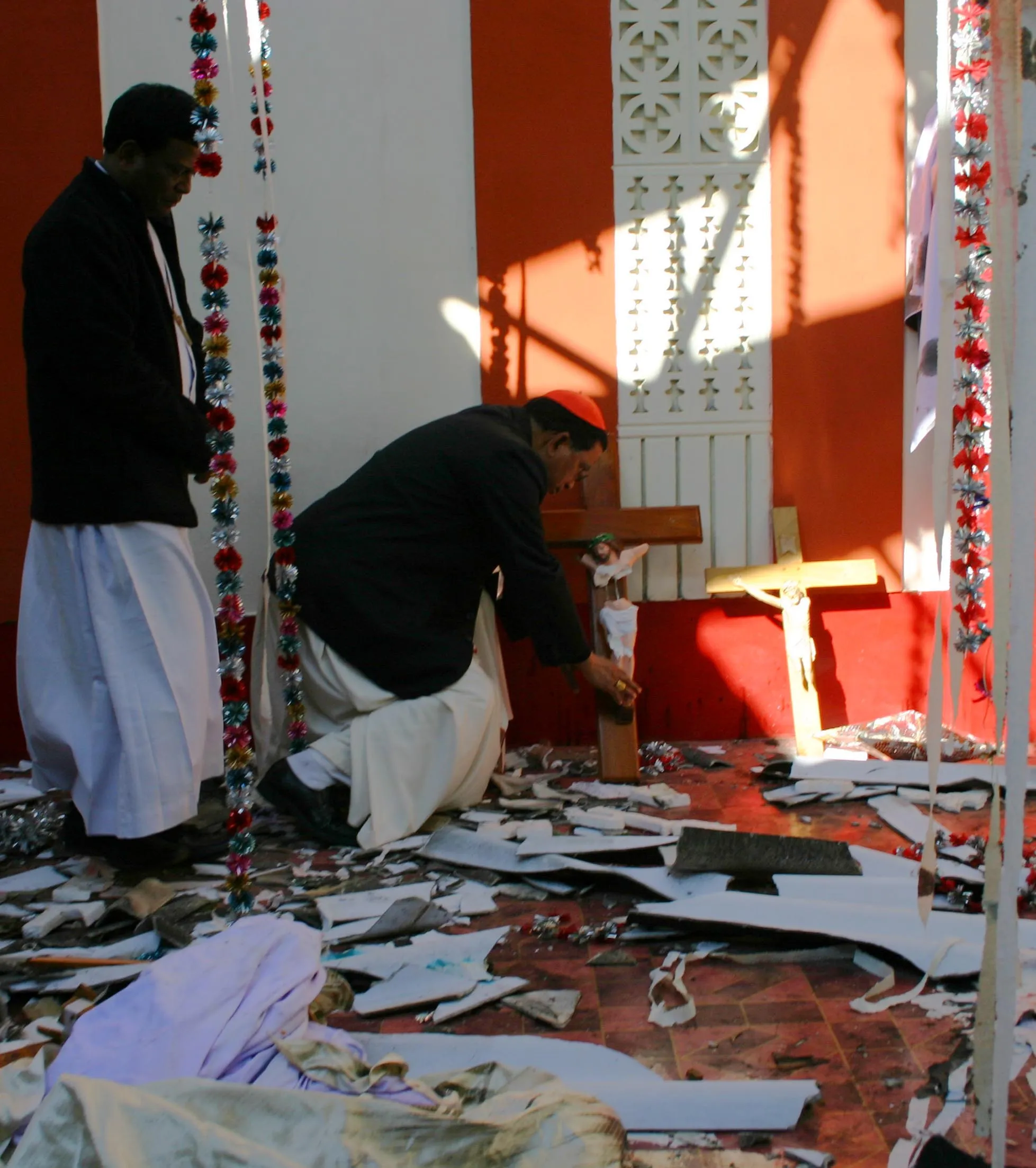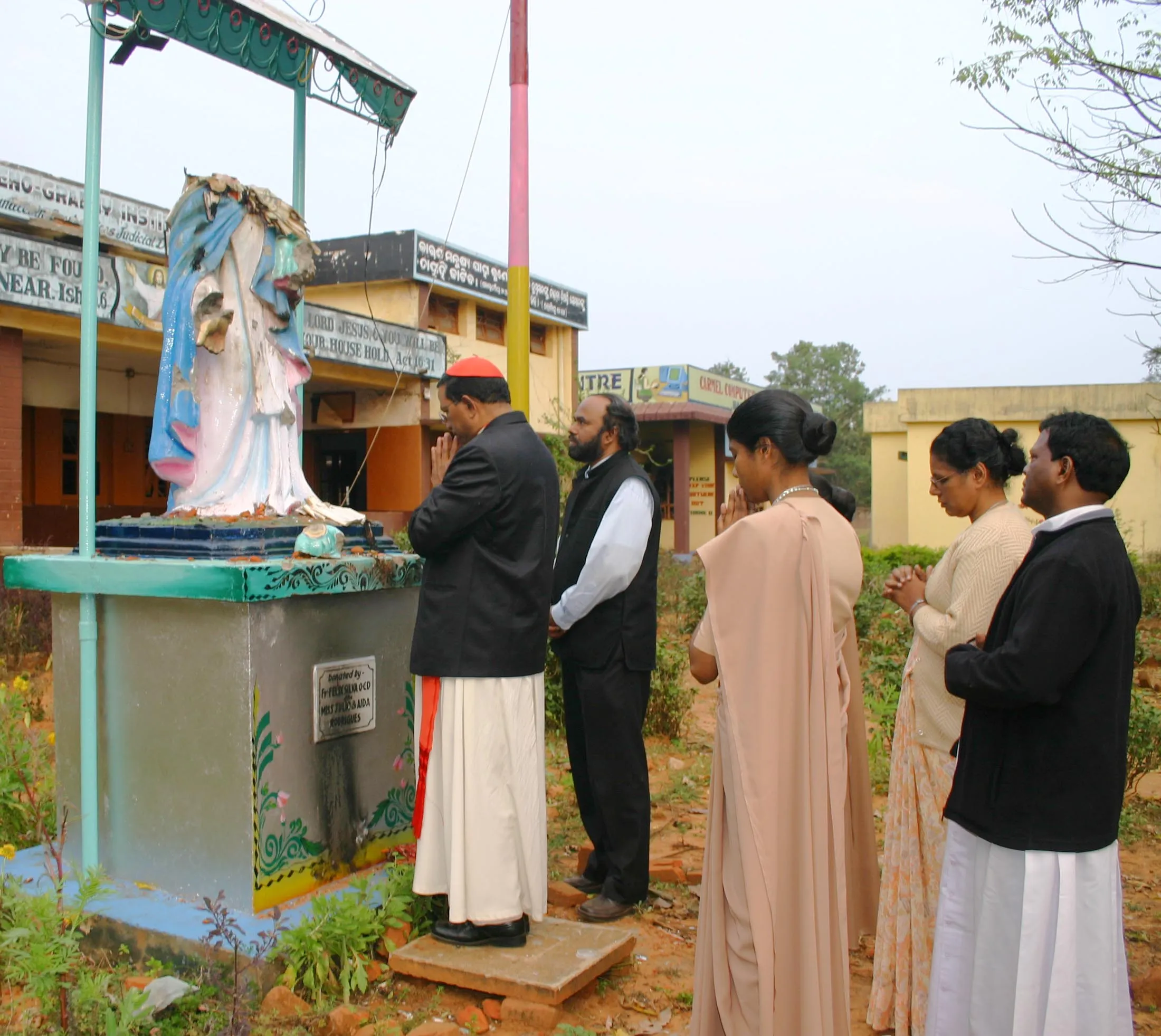Thousands Mourn Indian Cardinal Telesphore Toppo at Funeral Mass

Tens of thousands of mourners in Ranchi, the capital of Jharkhand state in eastern India, bid farewell to Cardinal Telesphore Placidus Toppo, Asia’s first tribal cardinal, Oct. 11 at a three-hour-long requiem Mass led by 27 bishops and attended by thousands.
Cardinal Toppo, an outspoken advocate for the exploited tribals and the poor, left a lasting legacy as was evidenced by the thousands of people at the funeral and those who lined the 18-mile route holding flowers in his honor the day before, on Oct. 10.
At the funeral, Hemant Soren, chief minister of Jharkhand state, along with members of the cabinet and legislators laid white floral wreaths on the coffin, already draped with India’s national flag before a ceremonial gun salute by the police.
Archbishop Felix Toppo of Ranchi presided over the funeral service, which was interrupted by the Jharkhand government’s tribute to Cardinal Toppo, former president of the Catholic Bishops’ Conference of India (CBCI).
Approximately 30,000 people assembled on the grounds of Loyola College and nearby St. Peter’s Seminary, and nearly 150,000 more watched the livestreamed funeral service across the country, while thousands more viewed the televised broadcast of the ceremony.
“The people were touched by our cardinal’s humility, simplicity, and social comment to the poor irrespective of their faith,” said Archbishop Felix Toppo, who had succeeded Cardinal Toppo as archbishop of Ranchi in 2018 after being transferred from Jamshedpur.
Those who lined the funeral route came for a final glimpse of the 84-year-old Cardinal Toppo, who died on Oct. 4 at Father Constant Leavan’s Hospital in Mandar. His body was brought to St. Mary’s Cathedral in Ranchi in a solemn procession lasting more than four hours and accompanied by a cavalcade of 500 motorbikes and cars.
Many more queued up at the cathedral on Oct. 11 from 3 p.m. until Toppo’s body was taken to the funeral service at the nearby Loyola College grounds where a massive tent with a capacity to seat more than 20,000 had been erected.
While 27 bishops attended the funeral, most of the top leadership of the Church in India was missing, including four cardinals from India, due to the ongoing Synod of the Bishops at the Vatican.
“Cardinal Toppo’s journey in the service of faith and humanity was one marked by humility, devotion, and unwavering commitment,” the CBCI had said in a press release soon after his passing.
Hailing from an Oraon tribal family of eight children, Toppo was ordained as a priest in 1969 and appointed bishop of Dumka Diocese in 1978 after theological studies at Urbania College in Rome. He was elevated as archbishop of Ranchi in 1985.
In 2003, Pope John Paul II named him a cardinal. Political commentators at the time remarked that the action was an acknowledgment of Cardinal Toppo’s passionate support for the carving out of the Jharkhand state, comprising the tribal heartland, from the eastern Bihar state in 2000.
Cardinal Toppo’s support for the decades-old tribal demand for a new state was hailed by Shilpi Neha Tirkey, the only lay speaker who addressed the funeral service.
“Cardinal Toppo played a big role in making Jharkhand known all over the world,” pointed out Tirkey, a Catholic woman legislator in the Jharkhand Assembly.
“We are proud that Cardinal Toppo ensured that Pope John Paul II was in Ranchi during his 1986 visit to India,” Tirkey added.
The tribal heartland of Jharkhand (meaning “land of forests”) experienced a steady decline in the tribal population from 38% at the time of India’s independence in 1947 to 26% of the state’s more than 32 million people, according to the 2011 national census.
Though Christians account for only about 5% (most of them Catholic) of the tribals in the state, Toppo was at the forefront of the campaign against the marginalization and exploitation of poor tribal migrant workers by the industrial lobby in the region, which is rich in minerals.
During the funeral service, it was recalled that Toppo had overseen the installation of two dozen tribal bishops since he became the archbishop of Ranchi in 1985.
“Had the Church not been here, perhaps Jharkhand state would not have been here,” the Jesuit Toppo had told this correspondent in an exclusive interview at the Ranchi archbishop’s house after his elevation as cardinal in 2003.
In his compassion for the sufferings of people, Cardinal Toppo rushed to remote Kandhamal jungles of eastern Odisha state as CBCI president after the widespread Christmas violence that destroyed over 100 churches and Christian institutions in 2007.
The image of Cardinal Toppo kneeling before a broken cross was testimony to his outrage over the orchestrated violence, which he described as “diabolic.”
Cardinal Toppo’s witness left his mark on the hearts and in the minds of the people of Ranchi.
Ranchi’s auxiliary bishop Theodore Masceranhas told CNA: “It is an end of an era, a legacy to be cherished, dreams to be fulfilled, promises to be kept.”
- Keywords:
- India
- indian catholic church




















